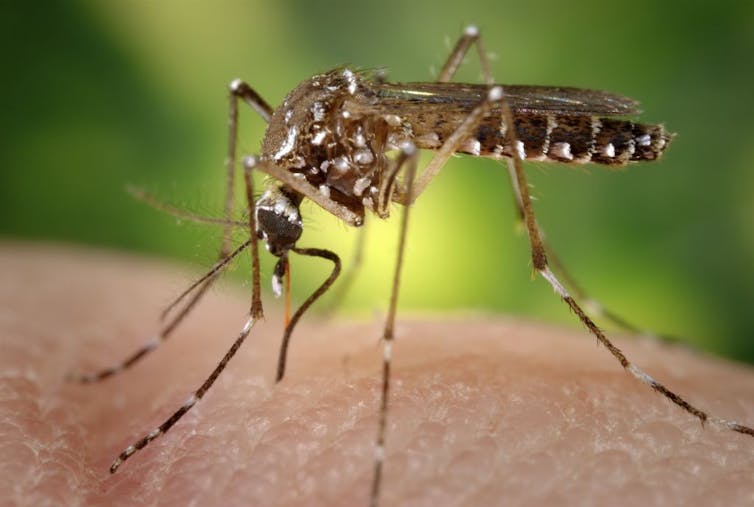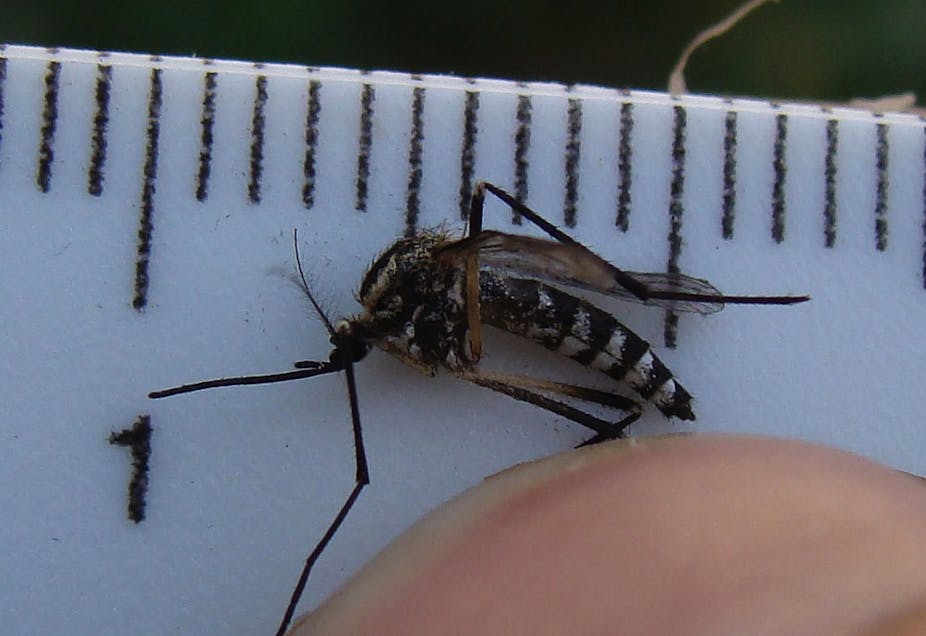Chikungunya is a virus transmitted to people by mosquitoes; it usually causes a non-fatal but debilitating illness.
Despite thousands of people being infected each year in Africa, Asia and Melanesia, chikungunya is not currently transmitted within Australia. The virus hasn’t had time and the opportunity to colonise Australia – yet.
Few Australians have immunity to the virus, leading to concerns that, should it become established here, there could be a very large outbreak.
A short history
Chikungunya was first identified in Africa. It’s closely related to the Ross River virus, which affects around 4,000 Australians each year, and causes similar symptoms of joint pain, fever, headache, conjunctivitis, and rash.
Whereas Ross River virus is maintained in animals such as kangaroos, chikungunya only persists in humans and other primates, and is circulated by mosquito bites. The dengue mosquito (Aedes aegypti), and the Asian tiger mosquito (Aedes albopictus) are its primary carriers.
The naming of chikungunya comes from a Tanzanian Makonde word meaning “to bend up”, in reference to the stooped posture of sufferers. A full recovery can be expected after a week or two, although some cases can be chronic and debilitating, incurring significant social, economic and direct medical costs.
In large epidemics, chikungunya infection has led to some fatalities.
As far as we know, Australians first started catching chikungunya overseas in 1989. A major upswing in imported cases from 2008 was related to major epidemics in Africa and India; the virus had mutated to become more infectious and cause more severe disease.
There were 168 cases of chikungunya notified in Australia between 2002 and 2012, with the majority of infections acquired by travellers in Malaysia, Indonesia, and India. Of course, the number of cases we know about may be just the tip of the iceberg of the actual number of people carrying the virus.

Of those carrying the virus, only some will get sick; of those who get sick, only some will see a doctor, and only some doctors will think to order a blood test for chikungunya.
Danger to Australia
So how likely is it that chikungunya could become established in Australia with transmission by local mosquitoes? Given the lack of general awareness of it, the lack of immunity among Australians, and our very poor understanding of just how much chikungunya is entering the country each year, the answer is unclear.
We have only the barest understanding of what parts of Australia are likely to have the right kind of environmental conditions to enable chikungunya transmission to occur.
Queensland remains the most likely place for chikungunya to become established, given that dengue mosquitoes (which can transmit the virus) are already there. But, in the last few years, studies of native Australian mosquitoes by Queensland scientists have shown local mozzies may be able to do the job in the right circumstances.
There’s also a risk that Asian tiger mosquitoes may colonise the Australian mainland from their springboard on the Torres Strait islands, where we know they have been since 2004 (when a survey on Masig Island located a small number of them).
From recent genetic evidence and historical records, these invasive critters are thought to have hitchhiked from East Timor and Papua New Guinea.
This is a cold-adapted mosquito that could work its way south into the major cities. As a carrier of dengue and chikungunya, the arrival of the Asian tiger mosquito could be a game-changer (or barbecue-stopper, if you like) – Australia would become home to two efficient chikungunya spreaders (vectors) well-adapted to city life.
Greater awareness of exotic diseases such as chikungunya could stimulate better surveillance. Coupled with some peer-reviewed risk analysis, we could be halfway to developing a national strategy for minimising the risk of chikungunya becoming established in Australia.

